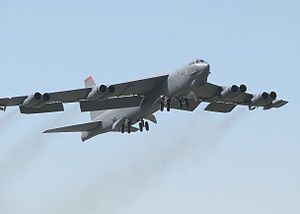United States Air Force
Jump to navigation
Jump to search



Boeing B-52 strategic bomber taking off.
The United States Air Force (USAF) is the air service branch of the country's armed forces, and is part of the Department of Defense. It was founded on 1 August 1907 as part of the United States Army Signal Corps, and then re-established in 1947 as a service branch in its own right.